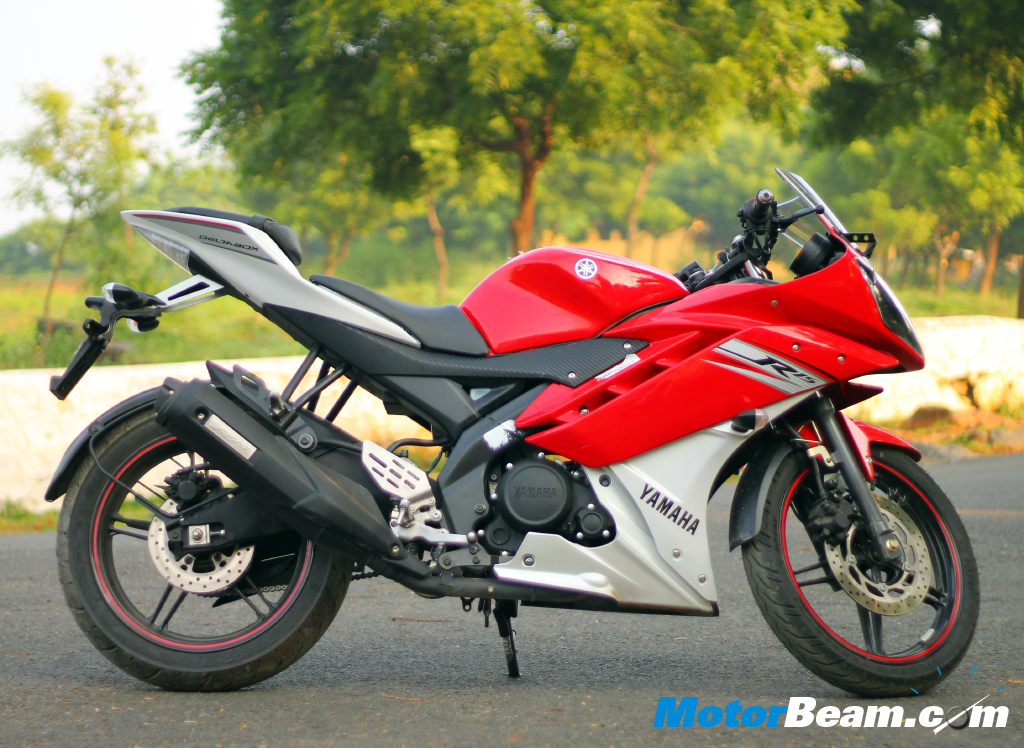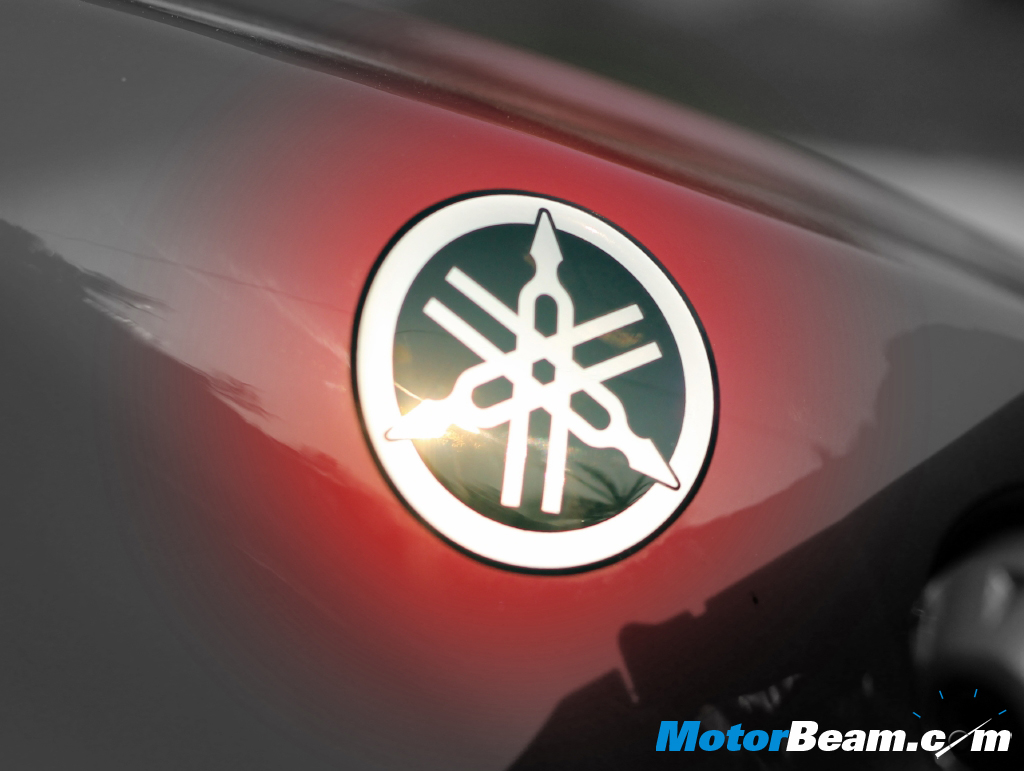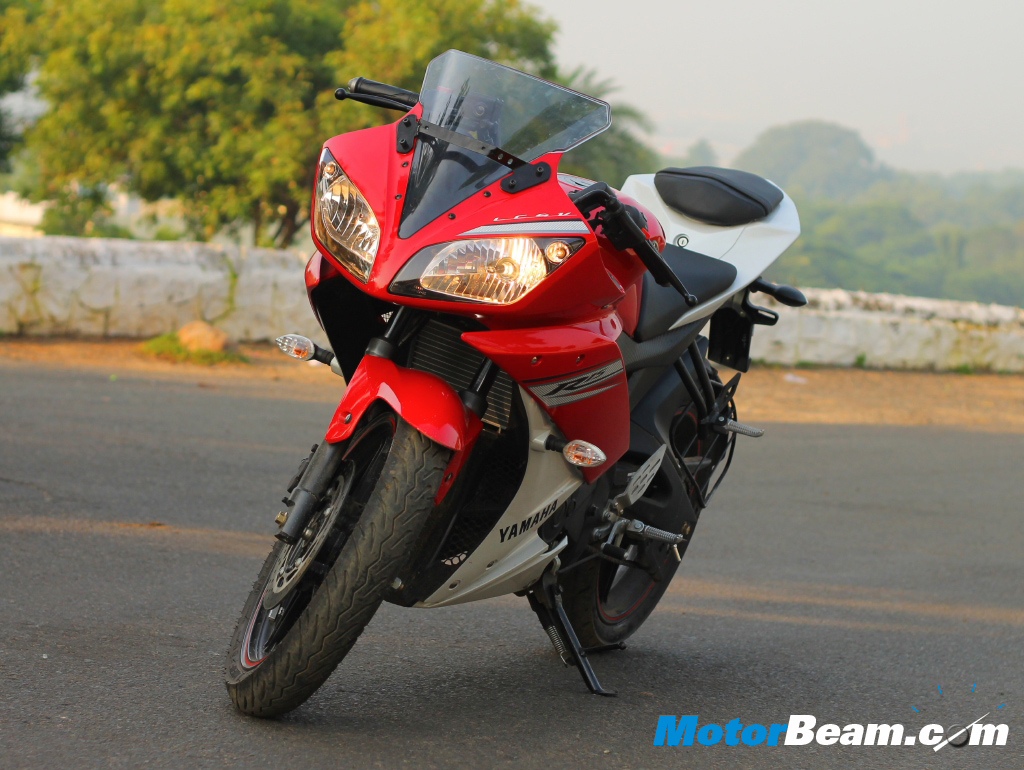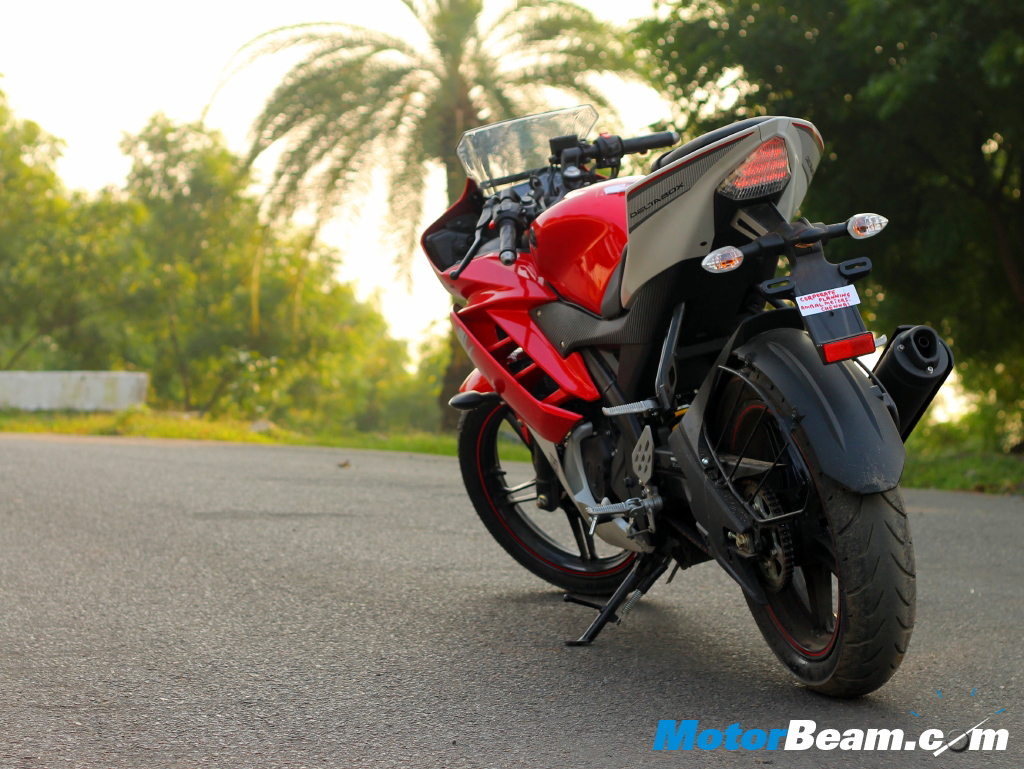
Bike Tested: 2011 Yamaha YZF R15 V2.0
Price Ex Showroom New Delhi: Rs. 1,07,000/-
The YZF R15, along with the FZ series did the unthinkable for Yamaha in India. They not only succeeded as individual products, but also turned around the fortunes of the whole company which was reeling under tremendous pressure owing to a string of failures and uninspiring models. The R15 especially, came, pioneered and popularized the concept of affordable sports-biking in India and made the Gen X population of our country queue up in front of Yamaha dealerships like there is no tomorrow. With a host of technological advancements that were ‘firsts’ for a bike manufactured in India, we bet that the Yamaha R15 was the first ever affordable motorbike in India that was tuned as much for the track as it was for the road. Fittingly so, it not only became a sales success but also scorched to supremacy in the racing circles. So, when Yamaha launches the successor of such a mighty product, we better pay notice.
Styling
The Yamaha YZF R15 was always a looker and the new model, dubbed Version 2.0 is no different. The V 2.0 retains the same frontal look as its predecessor with the twin trapezoidal headlights, the V-shaped front visor and the slightly beefier full fairing on the sides giving it a big-bike look and feel that many Indians crave for. In fact, a major USP of the Yamaha R15 would be the fact that it looks a whole lot similar to its bigger cousins, the R6 and, in some angles, the R1 too. The fact that the front-end design remains unchanged and still looks contemporary just goes to show how much advanced the earlier R15 really was.
One major grouse that the earlier R15 had was that it’s rear end looked rather meek and disproportionate compared to the rest of the bike. Yamaha was just not able to justify the run-of-the-mill rear end and the relatively thin tires that the earlier Yamaha R15 came shod with, given its extraordinarily sporty intentions. That complaint has been well taken care of now. A combination of the R6-inspired LED taillights, the aggressively upswept silencer, the split saddle, the naked frame that holds the license plate and indicators and the chunky rear tire makes sure that the bike turns heads wherever you go. Overall, the R15 V2.0 is a stunner end to end.
Instrument Cluster and Switch Gear
The Yamaha R15 V2.0 has an instrument cluster that can be termed as a perfect blend of sporty and modern. The console has two distinct divisions. The right side houses a circular analog tachometer with black on white fonts that looks beautifully upmarket when lit. The left side has a rectangular digital display with all the tell-tale lights and also features the odometer, twin trip meters and the fuel level indicator. Like all modern bikes, all the lights blink once and the tacho needle does a full swipe when the ignition is turned ‘ON’. The switchgear is strictly similar to all other bikes out there and is made of good quality materials that are built to last.
Performance and Gearbox
Powered by a 149.8 cc, single-cylinder, liquid-cooled, 4-stroke engine the R15 V2.0 has a maximum power of 17 PS at 8500 rpm and a maximum torque of 15 Nm at 7500 rpm, figures that stacks up well with other bikes of similar engine capacity. Crank the engine and the exhaust note greets you with its sporty yet smooth thrum. Acceleration and pickup are nothing exceptional and you have every right to feel disappointed, given the bike’s sporty intentions. Though we did not test the acceleration figures, we can definitely say that the Pulsar 220 and Karizma ZMR would be quicker off the block than the Yamaha R15. But, you know that you are not buying the R15 for outright speed and acceleration, isn’t it?
The Yamaha R15 V2.0 comes with a 6-speed gearbox with the universal 1-down 5-up pattern. The gear-ratios are well spaced out and the shifts are seamless though, at times, false neutrals were engaged accidentally. What is noteworthy is the fact that the R15 V2.0 is as comfortable trundling along in second or third gear in congested city traffic as it is cruising all day long at 100 kph in sixth gear. We felt the drivability inside the city to be significantly improved over the previous version courtesy the strong low and mid range and that could well be because of the re-mapped ECU and the tweaked ratios.
The only factor of concern was the excessive engine heat that could be felt in our legs. Though it could be because of the engine in our test bike being brand new, we have seen a few customers too complaining of this issue and Yamaha needs to look into this matter and put an end to it. The other issue would be the sporty seating posture which, if you are not used to, could make you feel tired after just a couple of hours in it. At the back, things are even worse with a high-set and steeply raked seat that makes do without grab rails. Though Yamaha claims that the rear seat is made of anti-slip material to aid grip, things doesn’t look all rosy for the pillion rider.
Ride, Handling and Braking
Get ready to forget about everything else and think just about owning the road all to yourself. Because, that is what the Yamaha R15 V2.0 will make you do with its near perfect handling that no other bike in this price range in India can ever match. You could have driven something else all your life but when you drive the Yamaha R15, you unknowingly tend to stretch your physical limits with far from normal lean angles and twists that comes so effortlessly astride this bike. Yamaha’s famed Deltabox frame has worked wonders here and the all-new aluminum swingarm has also aided in handling by reducing the weight and improving the rigidity of the chassis.
The ride is absorbent enough and filters most of the bumps and potholes that our cities have in abundance but it is definitely not the best in class. The braking though is top notch with discs at front and rear providing the bike with ample stopping power. With Honda and even TVS offering one in their sporty models, Yamaha should have acted smart and brought in atleast one variant with the Anti Lock Braking System that would have improved it’s case further. The stock MRF tires coped up well and never felt uncomfortable in any conditions with the wider 130/70 radials at the rear providing vice-like grip of the road beneath.
Conclusion
After spending two days with the bike, we were really not willing to let it go. The head-turning looks, the near-perfect handling and adequate power to tackle the city traffic and open highways in equal measure had grown on us and we can assure you readers that it would be no different for most of you out there. Be advised though that the R15 V2.0 will not make sense as your everyday commute to the grocery shop or to drop your kids at school. Yamaha makes the SZ-R for chores like that. Leave the R15 V2.0 for the young and young-at-heart who spends the weekdays at work and weekends at track and doesn’t mind spending a little extra money for that.
What’s Cool
* Stunning Looks
* Supreme Handling
* Composed Ride and Stability
* Nirvana of sports-biking at an affordable price
What’s Not So Cool
* Excessive Engine Heat
* Lack of ABS even as an option
* Expensive for a 150cc bike
Yamaha YZF R15 V2.0 Specifications
* Engine: 149.8 cc, Single Cylinder, 4-stroke, SOHC, 4-valve, Liquid Cooled
* Fuel Delivery: Fuel Injected
* Maximum Power: 17 PS @ 8500 RPM
* Maximum Torque: 15 Nm @ 7500 RPM
* Transmission: 6-speed Manual
* Fuel Type: Petrol
* Suspension: Telescopic Forks (Front), Linked Type Monocross (Rear)
* Tires: 90/80/17 (Front), 130/70/17 (Rear)
* Brakes: Hydraulic, Single Disc (Front & Rear)
Yamaha YZF R15 V2.0 Dimensions
* Overall Length x Width x Height: 1970 mm X 670 mm X 1070 mm
* Wheelbase: 1345 mm
* Ground Clearance: 160 mm
* Fuel Tank Capacity: 12 liters
* Kerb Weight: 136 kg
Text: Aravind Ramesh
Photography: Arun Varadarajan & Aravind Ramesh







